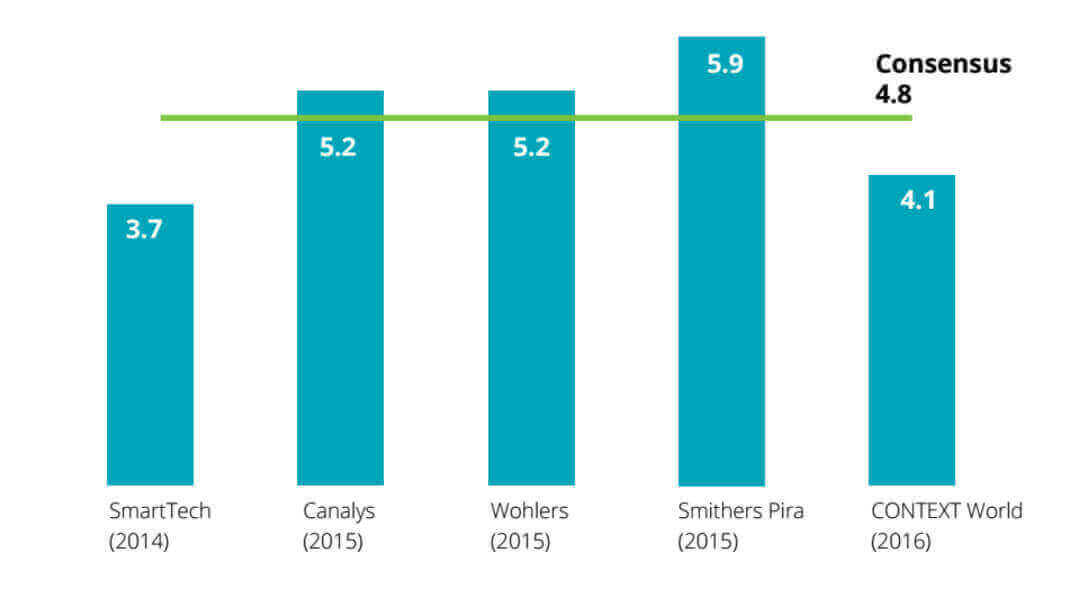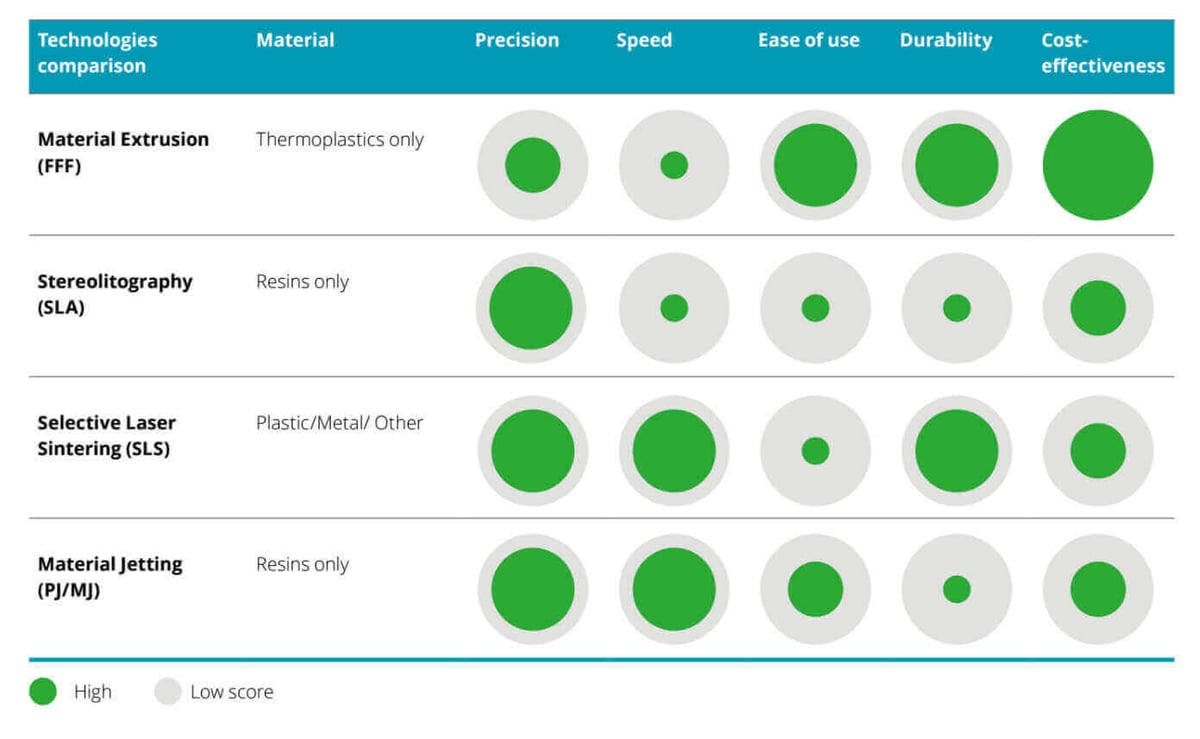New report by Deloitte Poland predicts that the global 3D printing market will grow from $4.8 billion in 2015 to over $20 billion by 2020.
Although the emergence of desktop 3D printing has created a niche market that is sometimes unpredictable and maybe even fickle, a number of renowned market research groups have taken a crack at predicting the future growth curve of the technology.
Fresh insights come from Deloitte Poland, in a report entitled “2016 3D Printing Market Outlook”. This in-depth market research was commissioned by the Polish 3D printing manufacturer Zortrax, and foresees an optimistic future for the 3D printing industry.
What makes the Deloitte Poland report unique is the inclusivity of the most respected 3D printing market research sources, including SmartTech, Canalys, Wohlers, Smithers Pira, and CONTEXT World.
By combining each analysis conducted by multiple market researchers, Deloitte came up with the consensus that the entire 3D printing industry was worth around $4.8 billion in 2015.
Using the same accumulation of various market forecasts, they were able to average out both the optimistic and pessimistic predictions and estimate that the market will be worth around $20.5 billion by 2020.
Though the Deloitte Poland report addresses the projected value of the entire industry, their analysis has a particularly keen focus on the ever-expanding world of desktop 3D printing.
According to the report, desktop models represented a whopping 95% of all 3D printers sold in 2015, a statistic that is especially intriguing when you consider that desktop 3D printing was essentially non-existent up until 2011.

Deloitte Poland: FFF Will Continue to Dominate the Market
Mark Cotteleer, the Research Director of Deloitte Services LP, said:
“In terms of sales revenues, the desktop segment generating $ 293 million represents a small share of the overall AM market – although a small segment, however, the desktop segment posted an impressive annual revenue growth of 62% in 2015.”
On top of that, the report also indicates that modern desktop 3D printers are quickly approaching the higher quality performance levels of their industrial counterparts.
Though desktop 3D printing was generally restricted to hobbyists and for educational purposes when they first hit the market, newer models have become useful in a wide range of industries, including engineering, product design, art, jewelry, dentistry, and consumer products.
Though the report also predicts that the more cost-effective Fused Filament Fabrication (FFF) technology is expected to dominate the 3D printing market for the foreseeable future, it’s important to note the clear-cut advantages that Stereolithography (SLA), Selective Laser Sintering (SLS), and Material Jetting offer (particularly with precision and speed).
The Deloitte Poland report also showed that the United States was still the largest purchasing region for 3D printers, followed by Western Europe, Japan, and China. The analysis also alluded to the fact that, although the biggest 3D printing manufacturers struggled throughout 2015, a considerable number of smaller companies experienced positive growth and overall progress.
All in all, the latest report by Deloitte Poland predicts an optimistic future for the 3D printing industry, especially in the desktop 3D printing market. However, whether or not these desktop machines can continue on their upward path to industrial-level performance remains to be seen.
Source: Press Release

License: The text of "Deloitte Poland Predicts Rosy Outlook for Desktop 3D Printing" by All3DP is licensed under a Creative Commons Attribution 4.0 International License.